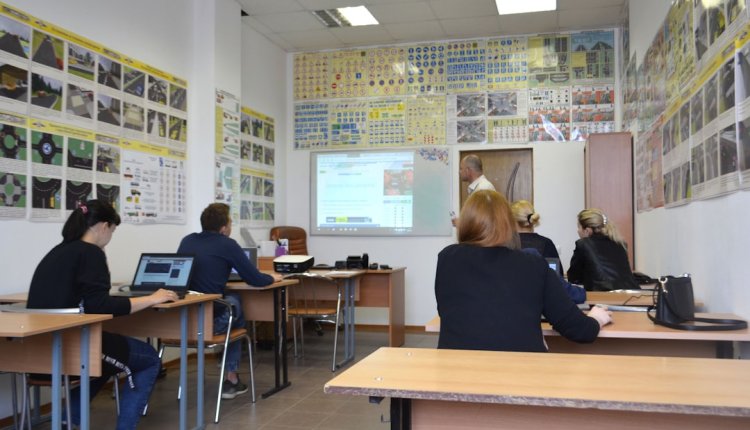How Sora Library Is Revolutionizing Digital Reading for Students and Educators
In the digital age, access to educational resources plays a pivotal role in shaping the learning experiences of students and the teaching strategies of educators. With the rapid progression of digital technology in the classroom, it is imperative to bridge the gap between students and accessible, engaging, and customizable digital content. Enter Sora, a digital reading platform developed by OverDrive Education, that is increasingly becoming an indispensable tool in K-12 education. Through its expansive e-book and audiobook offerings and an interface tuned specifically for education, Sora is revolutionizing digital reading for both students and educators.
An Overview of the Sora Platform
Launched in 2018, Sora was designed to meet the growing demand for equitable access to educational content. Unlike commercial digital reading services, Sora is designed specifically for schools and offers a robust platform that emphasizes curriculum support, ease of use, and powerful educator tools.
One of the defining features of Sora is its user-friendly interface, which encourages reading through gamified reading achievements and intuitive navigation. Students can borrow titles via their school’s digital collection and also access public library collections if enabled, expanding the learning possibilities exponentially.

The Benefits for Students
Sora significantly enhances the student reading experience by offering benefits that are particularly suited to today’s learning environments. These include:
- Accessibility and Inclusivity: Sora supports adjustable fonts (including OpenDyslexic), audio narration for audiobooks, and synced reading progress across devices, helping students with different learning needs stay engaged.
- Anytime, Anywhere Access: Sora works across devices—smartphones, tablets, and desktops—ensuring students can access their materials whether they’re in class, at home, or on the go.
- Engagement Tools: Built-in features such as achievement badges, reading stats, and easy-to-navigate interfaces promote independent reading and boost student motivation.
- Diverse Catalog: Sora provides access to thousands of eBooks and audiobooks across various genres, authors, and topics, allowing students to explore subjects that resonate with their interests.
Through these features, Sora not only promotes literacy but instills a lifelong love for reading. More importantly, by removing traditional barriers like physical book scarcity, it creates a more equitable learning environment for all students.
Empowering Educators
Educators also stand to gain immensely from Sora’s capabilities. Not only does the platform reduce the administrative burden of managing physical media, but it also offers robust tools tailored to academic goals, such as:
- Curriculum Integration: Teachers can assign reading materials directly through Sora and monitor access and progress, making it easier to align reading assignments with curriculum standards.
- Analytics and Insights: Educators can access detailed reading data—including time spent reading, number of books read, and frequency of engagement—to tailor instruction to student needs.
- Custom Collections: Schools and districts can curate collections that align with lesson plans, cultural events, or current events, ensuring relevance and engagement.
- Professional Development Resources: Sora offers training materials and support to help instructors make the most of the platform’s features.
With its robust administrative dashboard and data-driven insights, Sora empowers educators to not only assign content but to make informed pedagogical decisions.
Closing the Digital Divide
One of the major challenges in education today is the digital divide—when students have unequal access to technology and educational resources. Sora helps mitigate this disparity by providing schools and districts with the ability to scale content according to infrastructure and budget capabilities. With internet access, students can read on any smart device, and for offline reading, Sora supports downloaded content, meaning students don’t need continuous connection.
Additionally, partnerships between OverDrive and public libraries mean that many students can access an extended digital bookshelf through their school account—without requiring a library card or additional credentials. This integrated approach ensures that even underserved communities have access to books beyond their school’s collection.

Impact on Reading Outcomes
The impact of Sora on literacy rates and reading engagement is being observed across numerous districts in the United States and globally. Some notable academic improvements attributed to the use of Sora include:
- Increased Independent Reading Time: Through features like reading streaks and engagement tracking, students are encouraged to read more frequently and for longer durations.
- Improved Reading Comprehension: The platform allows multiple ways to consume content—visually or through audio—supporting different learning styles and increasing comprehension.
- Enhanced Reading Equity: Title availability in multiple languages supports English Language Learners (ELLs) and ensures inclusivity within diverse classrooms.
Schools that rapidly adopted Sora during remote learning periods reported an overall rise in borrowed titles, proving the platform’s utility in both in-person and virtual learning settings. These figures point strongly toward a positive correlation between digital access and reading success.
Security, Privacy, and Compliance
Security and student privacy are top priorities in educational technology, and Sora does not fall short in this regard. Fully compliant with FERPA and COPPA, Sora ensures that student data is kept secure and is only used to support educational outcomes. Through controlled access policies, role-based permissions, and secure data handling, institutions can deploy Sora with confidence.
Global Reach and Future Potential
Although initially rolled out in the United States, Sora’s adoption is expanding internationally, with schools in Canada, Europe, and Asia recognizing its potential. The scalability of the platform means that more educational institutions globally can bring Sora into their classrooms with minimal setup and proven benefits.
Looking toward the future, the developers behind Sora are constantly evolving the platform based on educator feedback and emerging educational paradigms. Innovations in AI-driven content recommendations, expanded partnerships with publishers, and enhanced educator dashboards are all on the horizon.
Conclusion
In an era where information is abundant but access remains imbalanced, Sora offers a reliable, scalable, and impactful solution to promote digital reading in education. By making reading more engaging for students and empowering educators with the tools and insights they need, Sora is not just a digital library—it is a transformative educational platform.
As more schools adopt Sora and explore its full potential, the dream of a more equitable, engaging, and efficient reading culture becomes not just possible, but inevitable.

Comments are closed.